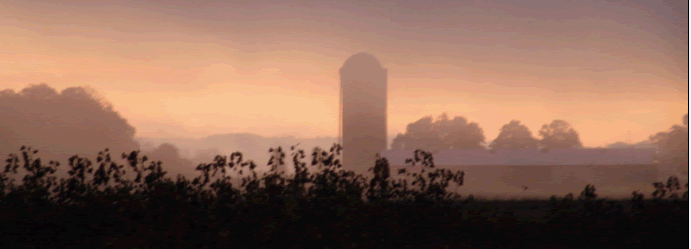
welcome to Joe's Web Site Cafe - Resources: http://www2.gvsu.edu/~abramajo
 |
Writing for the Web:
Applying Writing Guidelines to Web Pages: Uses a practical example to explore the connections between conciseness, objectivity, and scannability -- all essential characteristics of good Web writing. This article is easy to read and applies the principles it espouses. Applying Writing Guidelines to Web Pages
Lean And Mean Tables: Applies the concept of 'Simplify, Simplify, Simplify' to the use of tables. The first part of this article/piece (what do you call these little web essays?) is easy to understand and very helpful in designing tables. The second part is a bit technical, but probably valuable to those versed in html code writing. Lean and Mean Tables
A List Apart, For People Who Make Web sites: Is a comprehensive site on writing for the Web, Web Design, and a host of other topics. They combine basic writing rules (applicable to any medium) with Web writing rules in a neat list of 10 tips for writing for the living Web. For the entire site go to A List Apart.
This is a really useful Web site that makes collaborative writing efforts very easy. It is free and allows you to share documents with others and to simultaneously edit those document. Check out Writely the next time you are involved in a group project. P.S.: To share and edit documents on Writely you must disable your browser's pop-up blocker while you working on the document.
Web site Design:
One Site, One Buck, One Day: A day in the life of a starving Web nerd, takes you through the common frustrations of creating a web site in one day. Written with nerdy humor. One Site, One Day, One Buck
What's Wrong with Internet Searching: Frustrated with searching the internet? This site explains why normal people (like us) may not be the problem. This is really about good browser design, but it carries over to good Web site/page design. What's wrong with Internet searching
Reference Style Sheet Guide: Shows the individual properties of the cascading style sheets in Dreamweaver. Until I saw this I really wasn't sure what a CSS was. This is an easy, graphic explanation, which reinforces that old saw that a picture is worth a thousand words (or something like that). Reference Style Sheet guide
Growing old is a bitch. It started when I was about 50 and since then my eyesight has slowly gone down hill. "Presbyopia," my ophthalmologist said, "it happens at your age. Just part of getting old." 'Go-to-hell' I thought, but then I realized it was true. So that's when you start making accommodations to beat back the ravages of age, and realize the importance of design in the media you use to help give your life meaning: Enter the need for dramatically different Web design for low vision people, as explained in Big, Stark, and Chunky. These low vision Web design concepts will continue to increase in importance as our population grows older, so we might as well know them now. One Problem: although the site has linked examples of low vision Web design, it doesn't apply its espoused principles to itself -- the sight has some of the smallest damn print I ever saw.
Customer-Centered was the management approach dejure several years ago, and like all such fads it's pretty much as forgotten as August days at the beach. But that doesn't mean it was totally useless (what is?). The Design of Sites: Patterns, Principles, and Processes for Crafting a Customer-Centered Web Experience is a book and it's expensive ($55 from Addison Wesley, but the GVSU library has one), but it's worth every buck because it's crammed with practical advise on how to develop Web sites for customers. Even if you not going to do this for a living, the chapter on "Knowing Your Customers: Principles and techniques" (chapter 3) is worth the read. True to it's title, the authors ask for Web feed back from you, the customer.
Using Dreamweaver:
Dreamweaver Walk-Through: After going through so many tutorials that I think I need a tutorial tutorial, I finally found one that makes sense (at least to me). This has two easy lessons, is written clearly, and is short -- sort of. If you're getting bogged down in other tutorials, you might give this one a try. Dreamweaver Walk-Through
How-To-Manuals generally leave me cold but for this class I bit the bullet and got a couple of used ones for about $20 a pop: when I can't understand something in one, I can usually go to the other and find a solution. Of the two, Marcomedia Dreamweaver For Windows and Macintosh (Peachpit Press), by J. Tarin Towers, is the best: it's more logical and has easy to read illustrations; the only problem is the index could be more thorough. Macromedia Dreamweaver MX HOT (Hands On Training), by Green, Rudner, and Weinman, (again, peachpit Press) is not bad, it's just that throughout it uses a mythic bonsai Web site to provide the hands-on part, and it gets annoying after awhile. It offers a Web site that offers and describes twenty-seen books on Web site development things from photoshop cs to deconstructing web graphics (a sure spell-binder if there ever was one).
More Does and Don'ts:
Job Aide: A handy one-page, printable, cheat sheet to keep at your side, or in your laptop case, for those times you just can't remember all the rules for good Web writing. It's also good to pull out and read when you're having a hard time falling asleep. P. S. This site also does some neat things with poems. Job Aide
Today's Featured Recipe:
Web site/page design is hard work so good nutrition is essential. Today's featured recipe for Macaroni with Three Cheeses. Now THIS is mac & cheese!